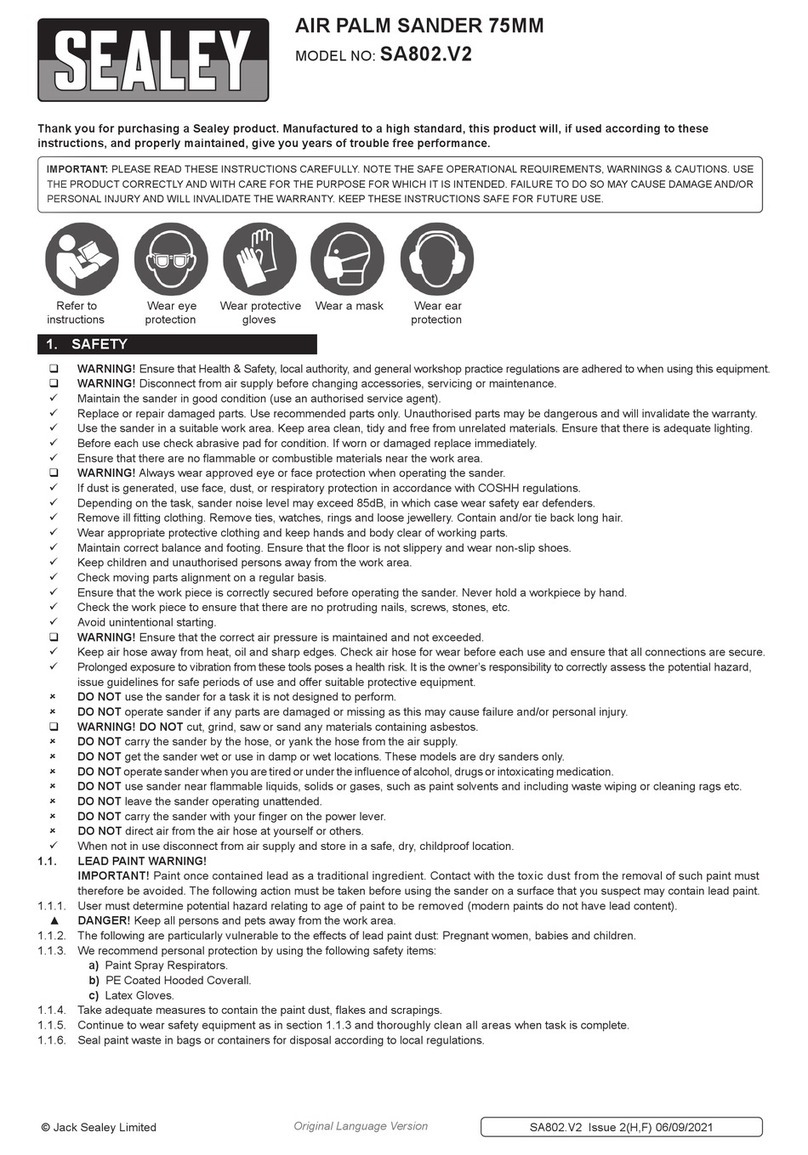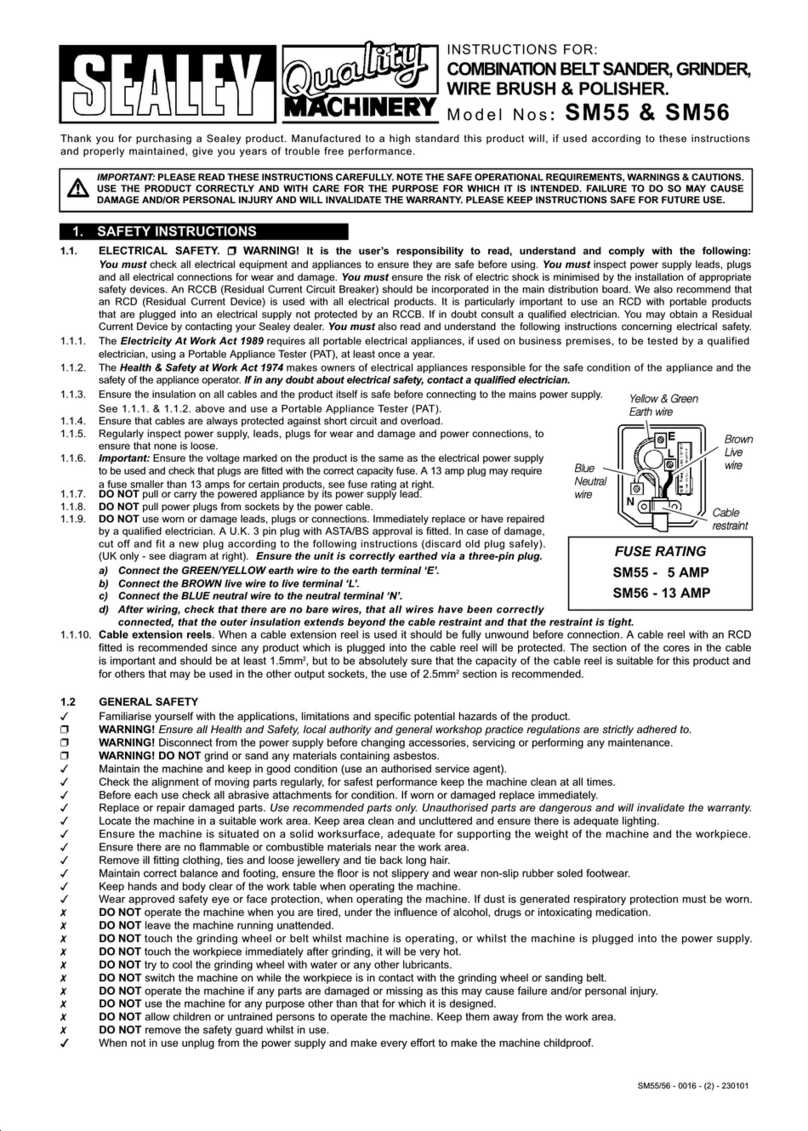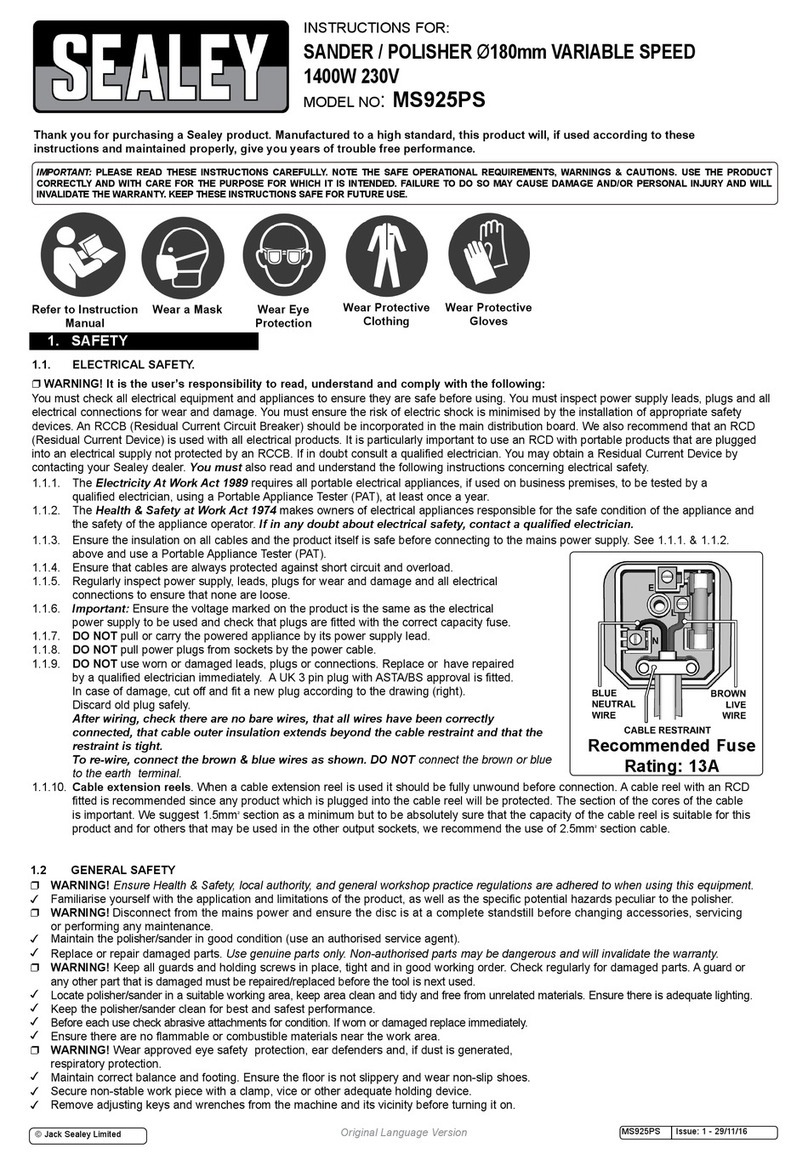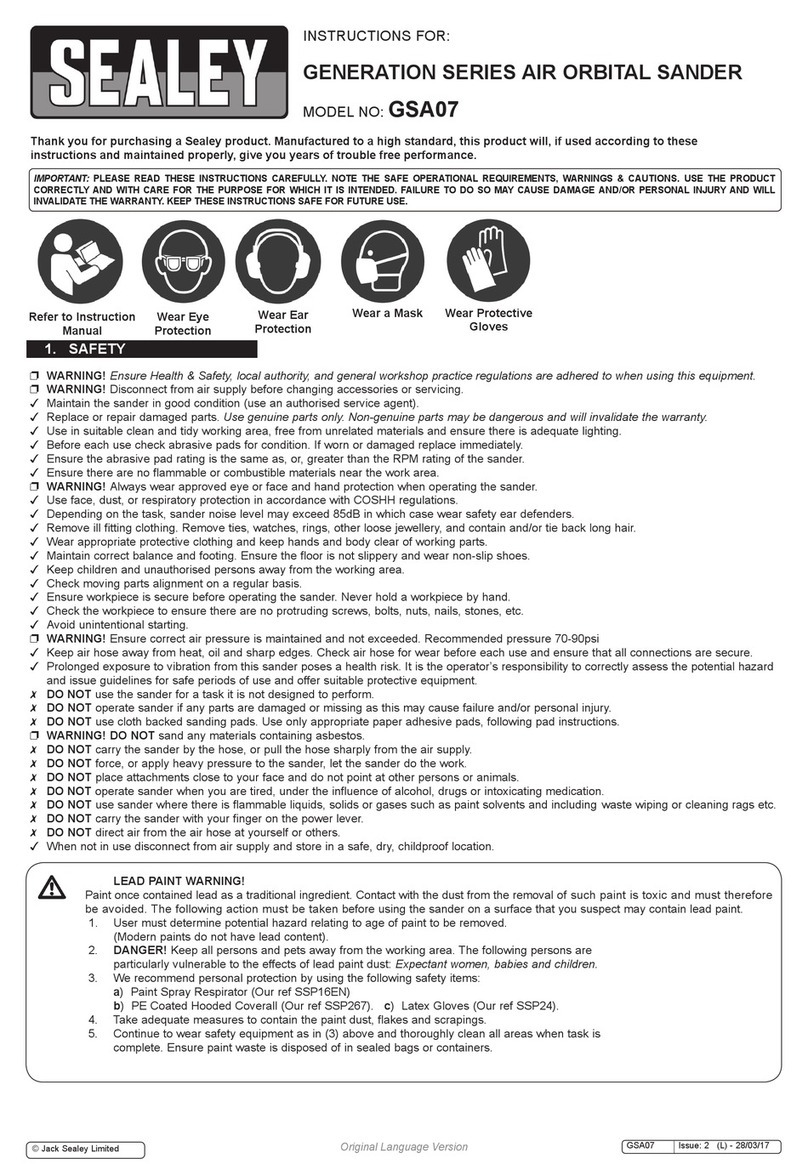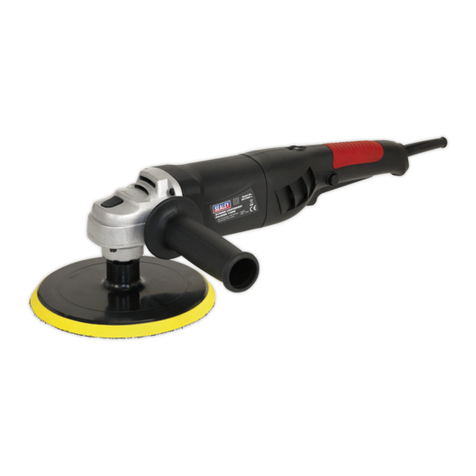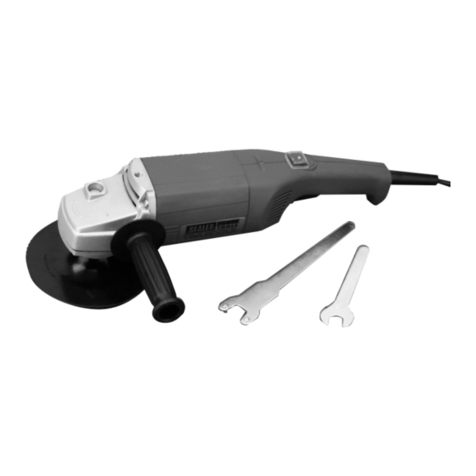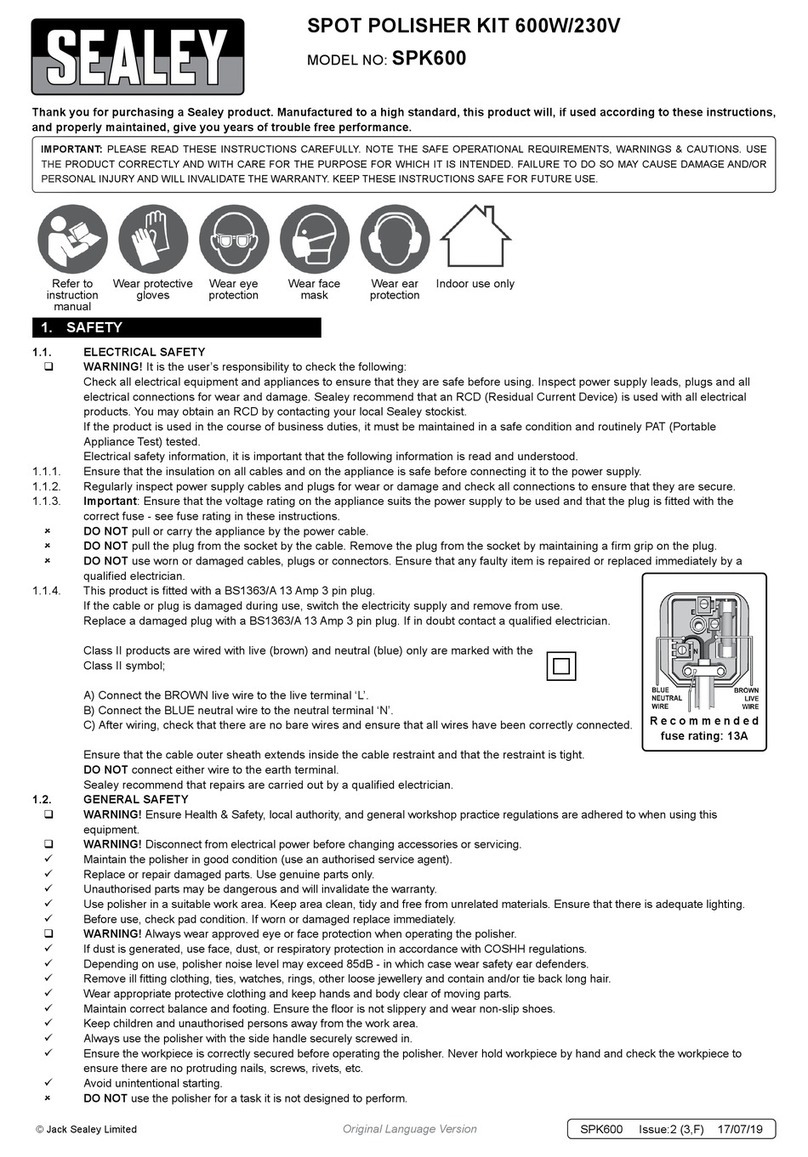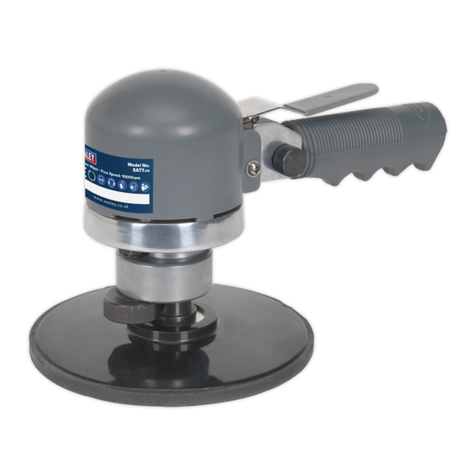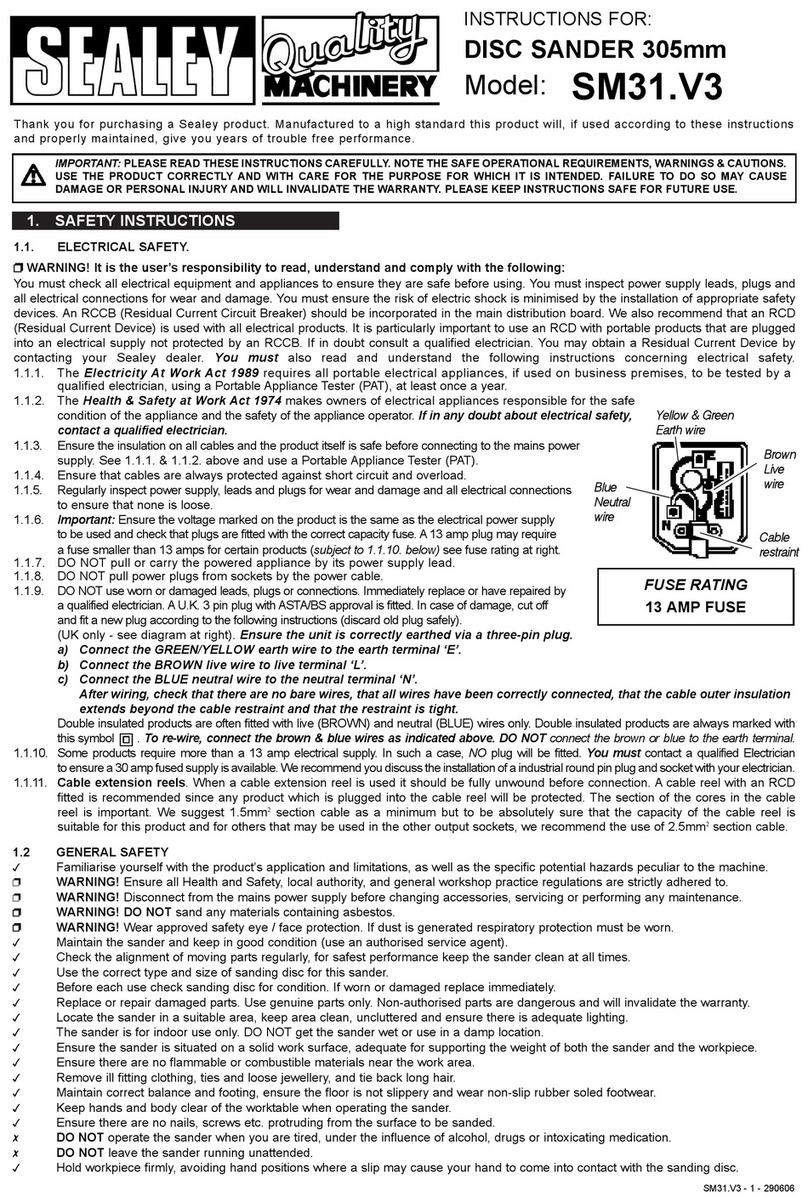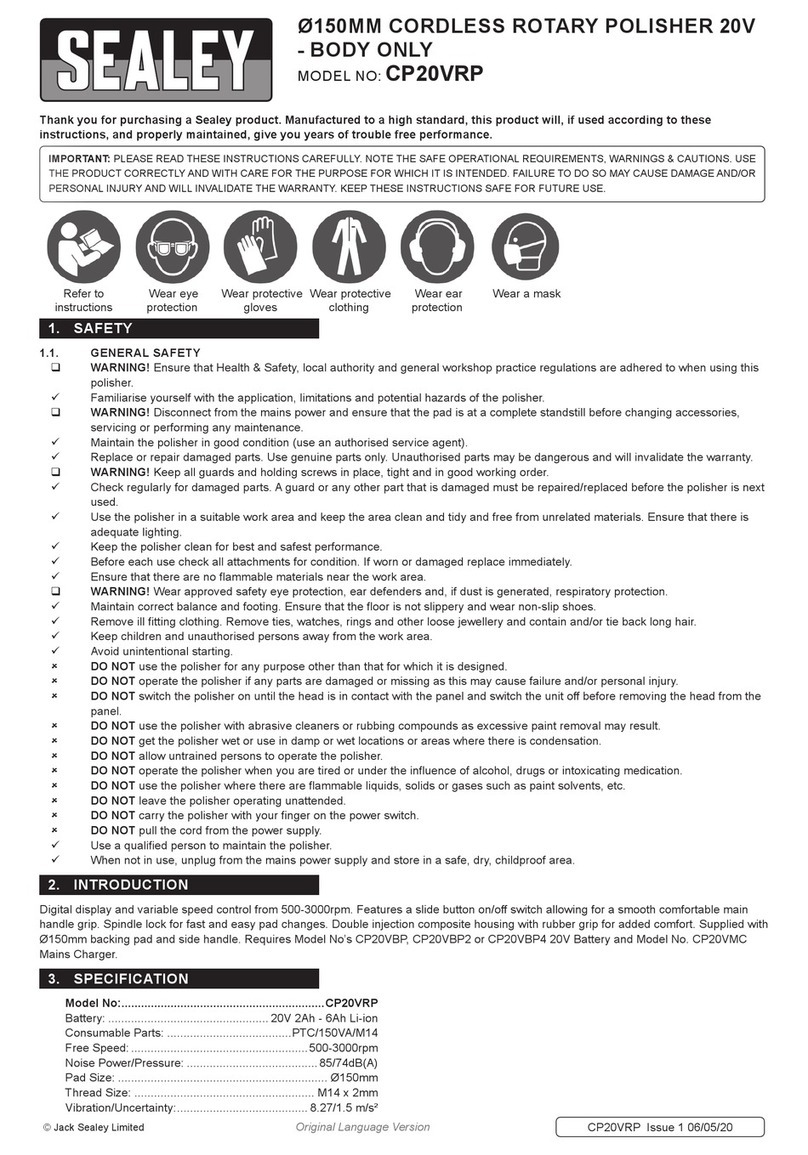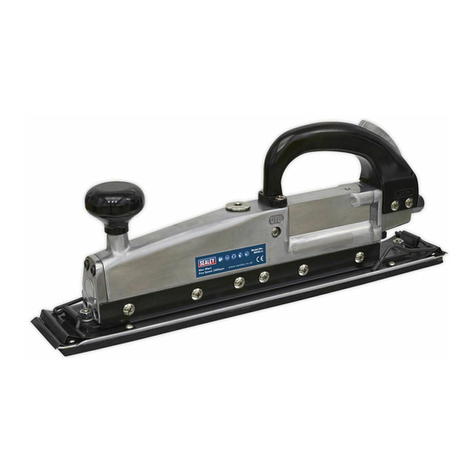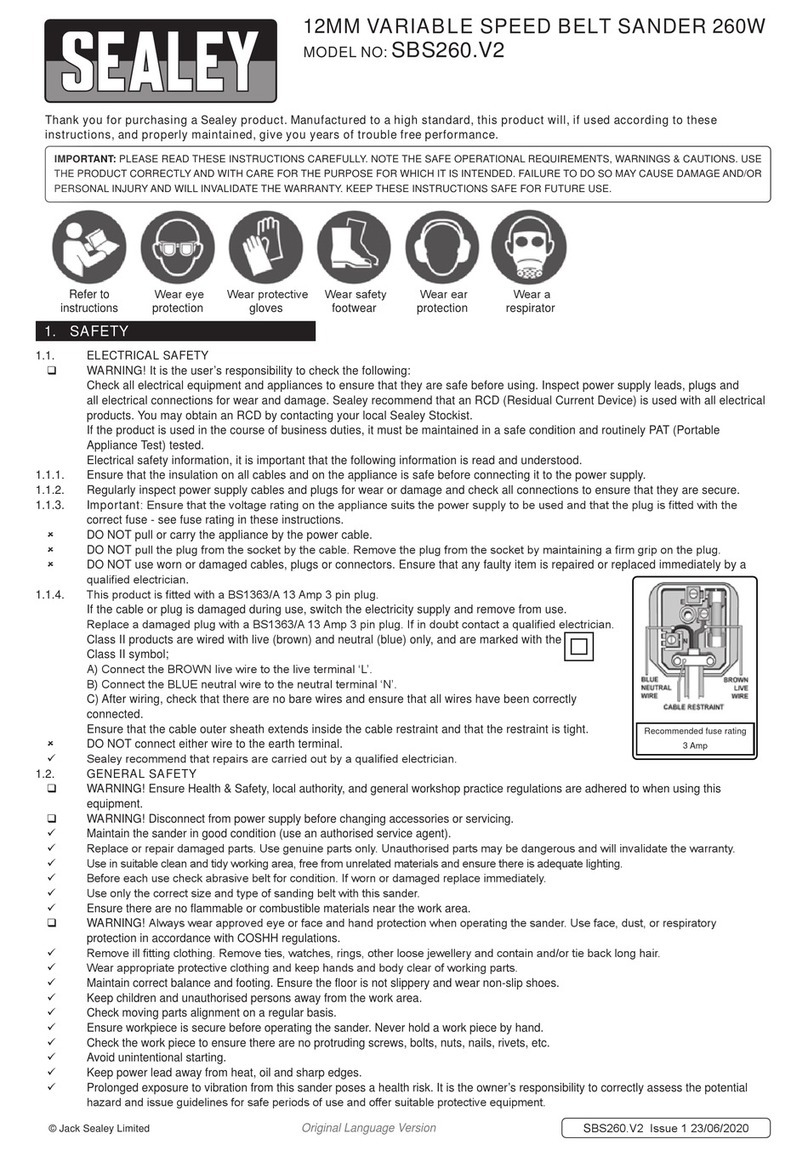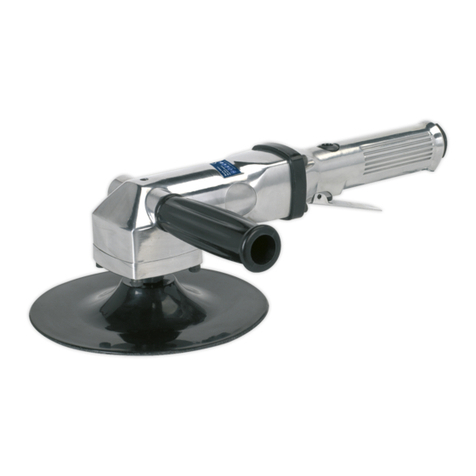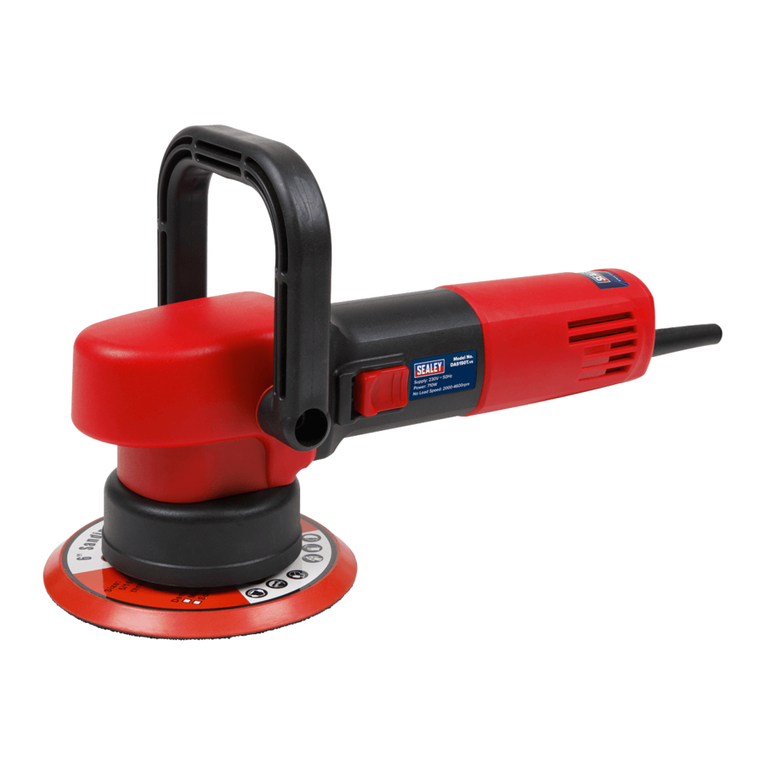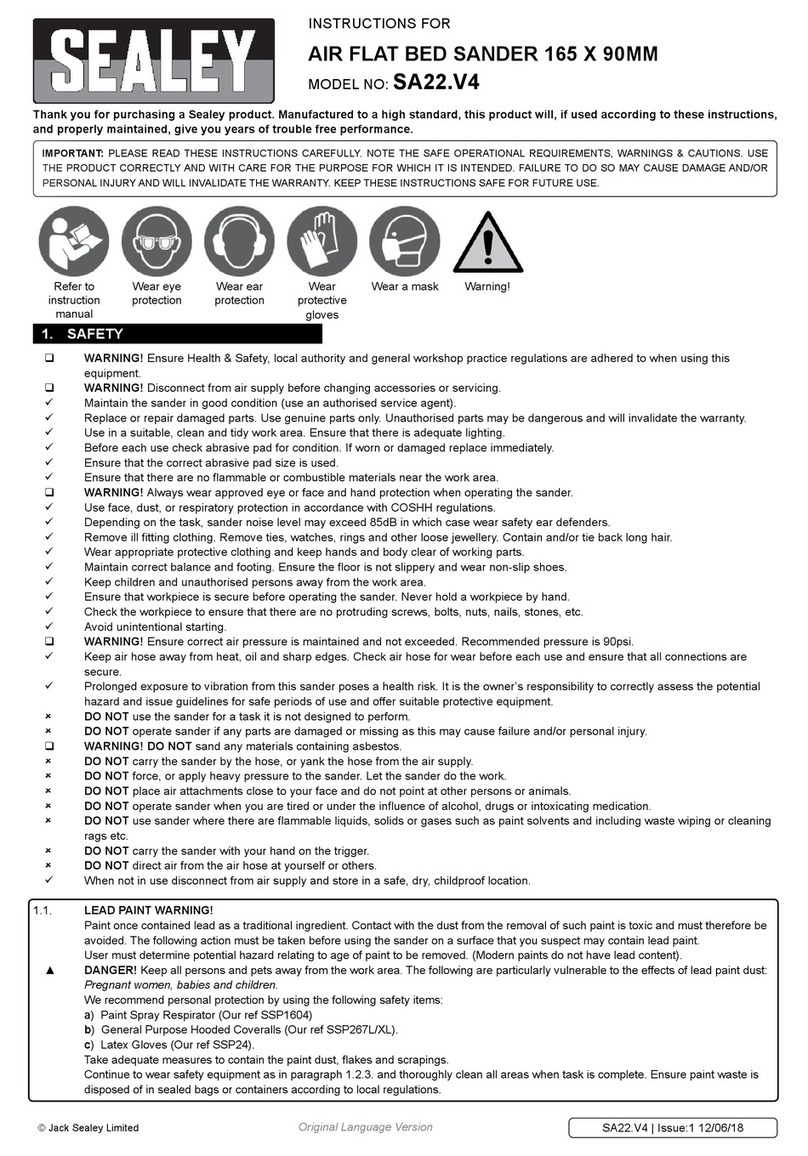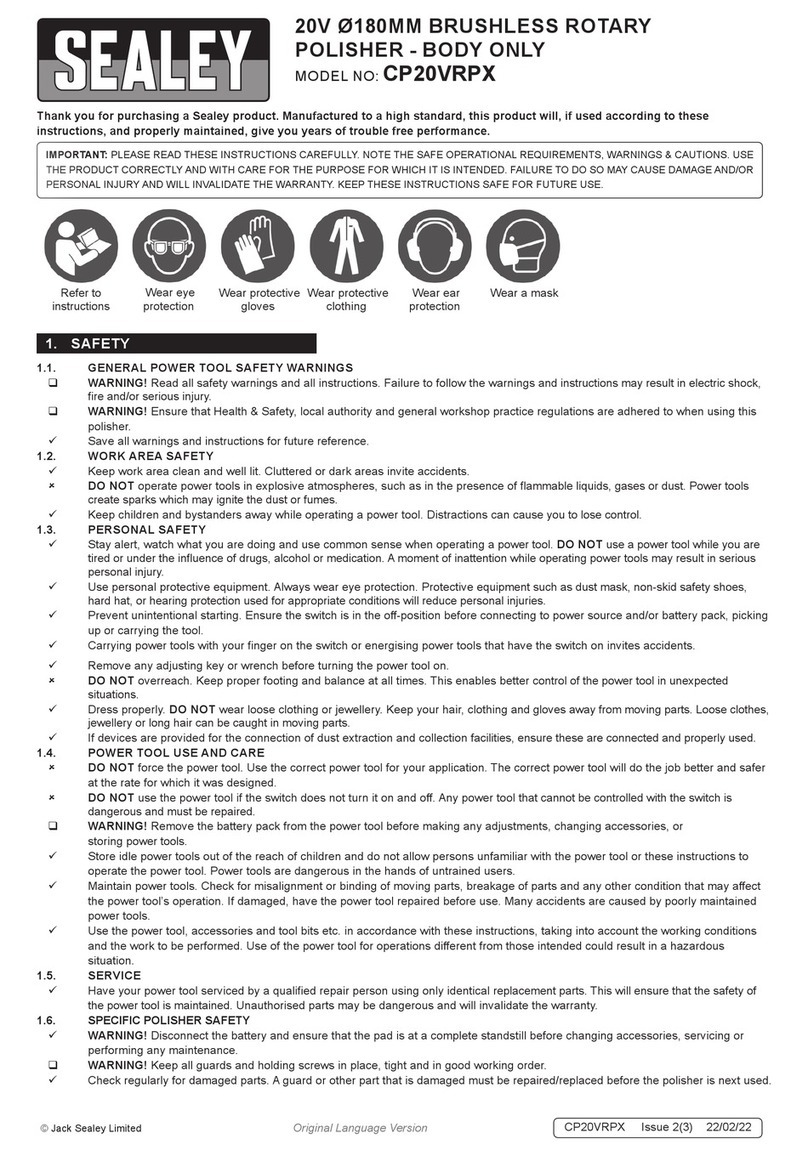
180MM AIR ANGLE SANDER
MODEL NO: SA18/S.V2
Thank you for purchasing a Sealey product. Manufactured to a high standard, this product will, if used according to these instructions,
and properly maintained, give you years of trouble free performance.
PLEASE READ THESE INSTRUCTIONS CAREFULLY. NOTE THE SAFE OPERATIONAL REQUIREMENTS, WARNINGS & CAUTIONS. USE
THE PRODUCT CORRECTLY AND WITH CARE FOR THE PURPOSE FOR WHICH IT IS INTENDED. FAILURE TO DO SO MAY CAUSE DAMAGE AND/OR
PERSONAL INJURYAND WILL INVALIDATE THE WARRANTY. KEEP THESE INSTRUCTIONS SAFE FOR FUTURE USE.
1. SAFETY
WARNING! Ensure Health & Safety, local authority, and general workshop practice regulations are adhered to when using this equipment.
WARNING! Disconnect from air supply before changing accessories or servicing.
WARNING! Always wear approved eye or face and hand protection when operating the sander.
WARNING! Ensure correct air pressure is maintained and not exceeded. Recommended pressure 70-90psi.
WARNING! DO NOT sand any materials containing asbestos.
8DO NOT use the sander for a task it is not designed to perform.
8DO NOT operate sander if any parts are damaged or missing as this may cause failure and/or personal injury.
8DO NOT use cloth backed sanding pads. Use only appropriate paper adhesive pads, following pad instructions.
8DO NOT carry the sander by the hose, or yank the hose from the air supply.
8DO NOT force or apply heavy pressure to the sander, let the sander do the work.
8DO NOT operate sander when you are tired or under the influence of alcohol, drugs or intoxicating medication.
8DO NOT use sander where there are flammable liquids, solids or gases such as paint solvents, waste wiping or cleaning rags etc.
8DO NOT carry the sander with your finger on the power lever.
8DO NOT direct air from the air hose at yourself or others.
8DO NOT hold the workpiece by hand. Use clamps or a vice (not included) to secure the workpiece. Available from your Sealey stockist.
8DO NOT allow untrained persons to operate the sander.
8DO NOT leave the sander operating unattended.
9Maintain the sander in good condition.
9Replace or repair damaged parts. Use genuine parts only. Un-authorised parts may be dangerous and will invalidate the warranty.
9Use in suitable clean and tidy working area, free from unrelated materials and ensure there is adequate lighting.
9Before each use check abrasive pads for condition. If worn or damaged replace immediately.
9Ensure the abrasive pad speed rating is the same as, or, greater than the speed rating of the sander.
9Use face, dust, or respiratory protection in accordance with COSHH regulations depending on task.
9Depending on the task, sander noise level may exceed 85dB in which case wear safety ear defenders.
9Remove ill fitting clothing. Remove ties, watches, rings, other loose jewellery, and contain and/or tie back long hair.
9Wear appropriate protective clothing and keep hands and body clear of working parts.
9Maintain correct balance and footing. Ensure the floor is not slippery and wear non-slip shoes.
9Keep children and unauthorised persons away from the working area.
9Check moving parts alignment on a regular basis.
9Keep air hose away from heat, oil and sharp edges. Check air hose for wear before each use, and ensure that all connections are secure.
9Check the workpiece to ensure there are no protruding screws, bolts, nuts, nails, stones, etc.
9
Avoid unintentional starting.
9Prolonged exposure to vibration from this sander poses a health risk. It is the operator’s responsibility to correctly assess the potential
hazard and issue guidelines for safe periods of use and offer suitable protective equipment.
9When not in use disconnect from air supply and store in a safe, dry, childproof location.
▲LEAD PAINT WARNING!
Paint once contained lead as a traditional ingredient. Contact with the dust from the removal of such paint is toxic and must therefore be
avoided. The following action must be taken before using the sander on a surface that you suspect may contain lead paint.
1.1. User must determine potential hazard relating to age of paint to be removed. (Modern paints do not have lead content).
▲DANGER! Keep all persons and pets away from the working area. The following persons are particularly vulnerable to the effects of lead
dust: Expectant women, babies and children.
1.2. We recommend personal protection by using the following safety items:
a) Paint Spray Respirator (Our ref SSP16EN).
b) PE Coated Hooded Coverall (Our ref SSP266).
c) Latex Gloves (Our ref SSP24).
1.3. Take adequate measures to contain the paint dust, flakes and scrapings.
1.4. Continue to wear safety equipment as in (2) above and thoroughly clean all areas when task is complete. Ensure paint waste is disposed
of in sealed bags or containers.
SA18/S.V2 Issue 5 (U) 12/11/18
Original Language Version
© Jack Sealey Limited
Refer to
instruction
manual
Wear protective
gloves Wear eye
protection Wear face
mask Wear ear
protection



